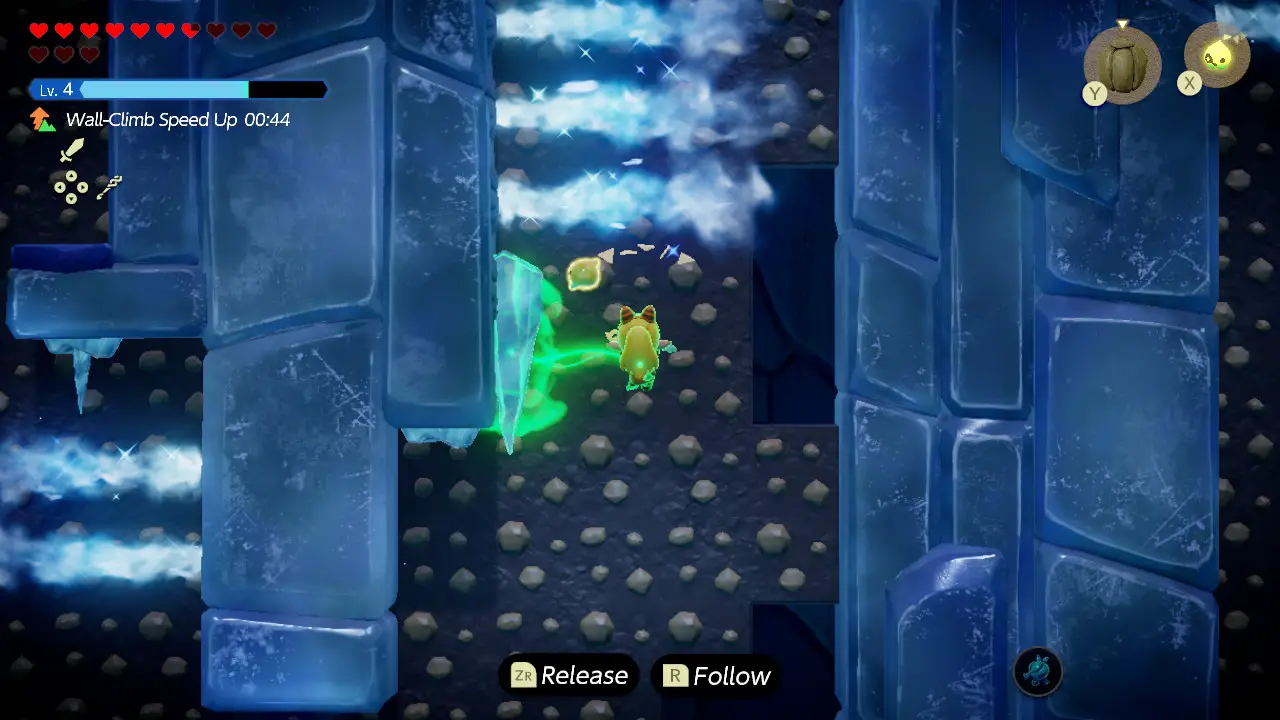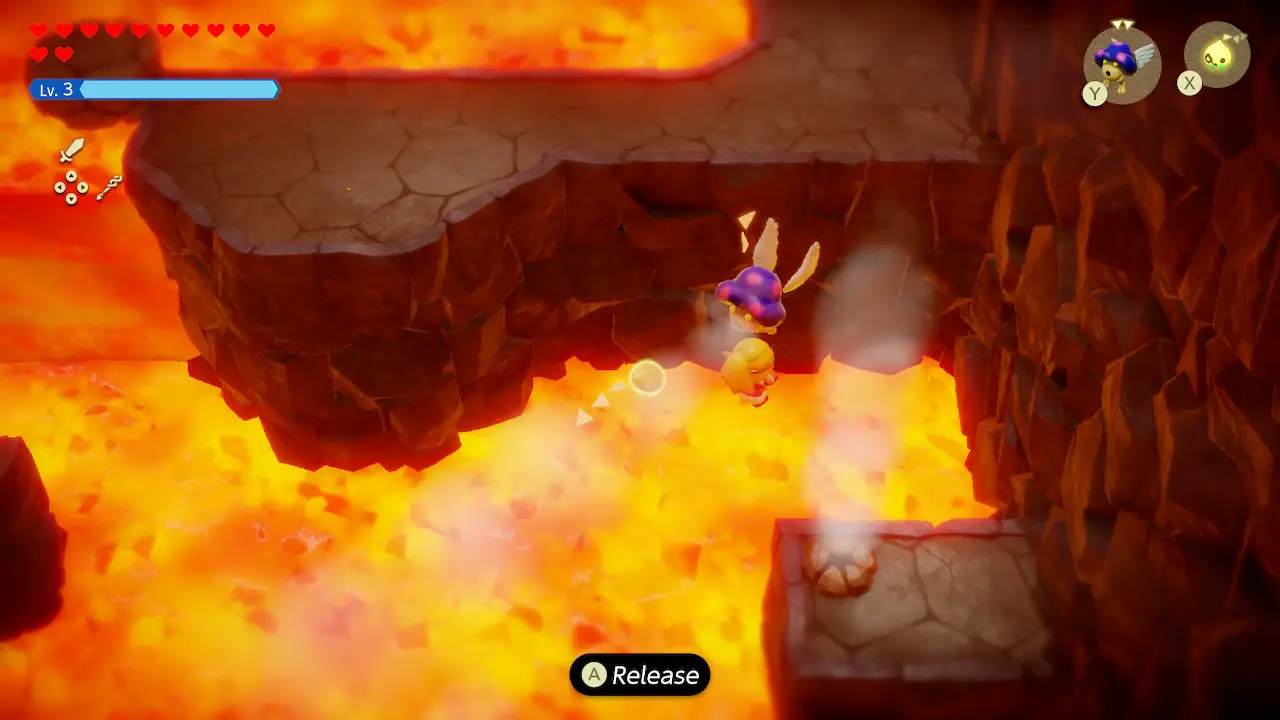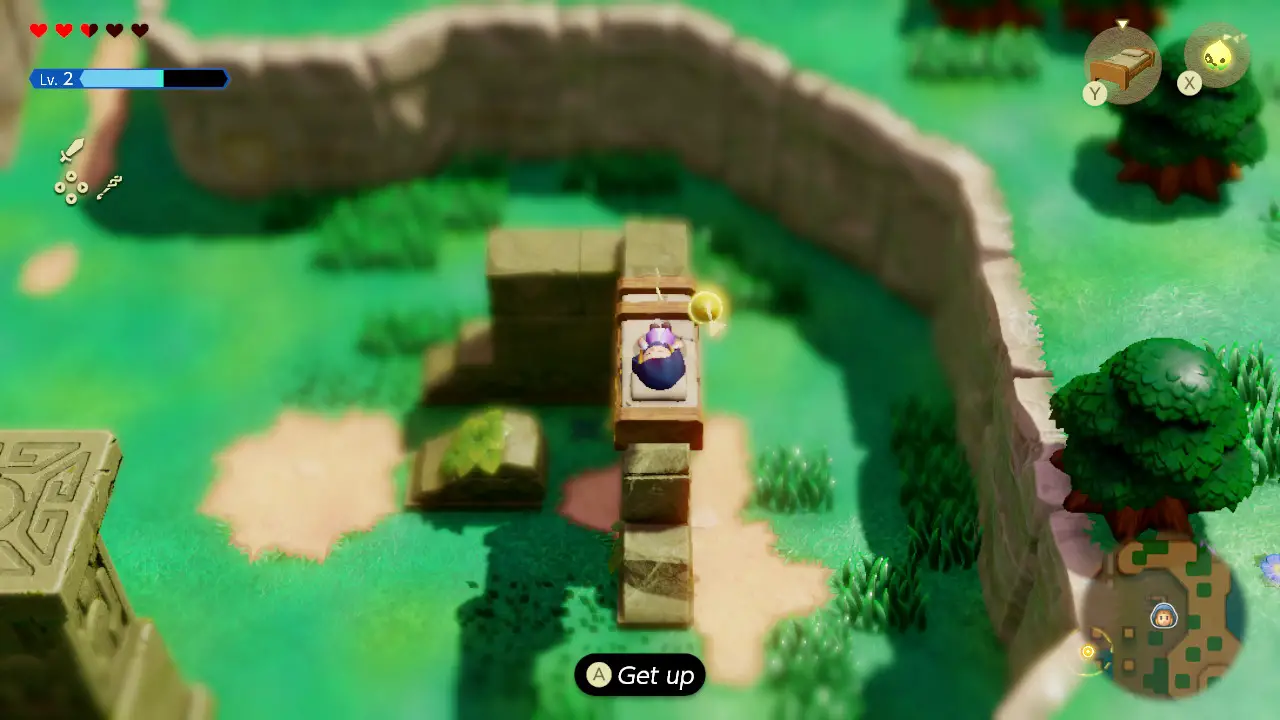Hyrule’s princess has been kidnapped. Again. The demon king Ganon lies in wait for a hero to come and rescue Zelda, and thankfully Link is once again up to the task. However, upon Ganon’s defeat, a rift opens up beneath the hero, swallowing him just as he frees the princess. For the first time in series history, it’s up to Zelda to save Hyrule and Link, but can one lazy girl really be the kingdom’s only hope?
The rifts can be found across the kingdom, swallowing up communities and throwing Hyrule into chaos. Everyone is tense, wondering what it all means and what could be done to stop it. Zelda alone possesses the power to fix everything with the help of her ethereal companion, Tri, who has gifted her the Tri Rod. With this tool, Zelda is able to summon Echoes, which are copies of things and creatures in the world that Zelda can use to solve puzzles, navigate dungeons and obstacles, and take on bosses. Almost anything can be echoed, from pots to boxes to spiders to rocks, using ZR. There is a limit as to how many echoes can be active at once, indicated by how long Tri’s tail is. If you’re already at the limit, the first echo you summoned is deleted.
Echoes can be deployed in many different ways and for many different purposes, however the majority of encounters, puzzles, and obstacles can be overcome by the same few echoes, which are all easily acquired fairly early in the game, including the old bed, Ignizol, flying tiles, Platboom, and… rocks? Especially in the beginning of the game when you have no weapons to defeat enemies, the rock echo comes in handy as you can pick it up and throw it. They don’t break on impact, and you can keep summoning and throwing them to your heart’s content. As you progress, you’ll get access to more echoes, including monsters and other critters that can lend a hand as you explore more of the world.
The Tri Rod also allows Zelda to Bond to some objects that can’t be echoed. If your pathway is blocked by a massive boulder, you can simply bind to it and drag it out of the way. You can also choose to ‘follow’ a bound object or creature to help you bridge gaps or avoid threats. Bond and Reverse Bond are some of the most interesting tools Zelda has at her disposal, and the puzzles that require it are often the most fun to solve, since you can’t just break them with an Echo. Realizing you need to move something on the other side of a wall or position Zelda in just the right way to be carried across a gap are the best “aha!” moments the game has to offer. These moments are common enough, but the rest of the puzzles, again, are far too easily broken in half, leaving many rifts to feel very samey.
Tri is your key to accessing the rifts, creating openings where you will be teleported to the Still World, a haunting void where anything and anyone that was swallowed by the rift becomes frozen for eternity, or until the rift is fixed. Here you’ll find remnants of castles, dungeons, and other landmarks that hold the secrets to fixing the rifts and restoring pieces of the world. This is where a great deal of your puzzle and problem solving skills will come into play as the Still World is full of otherworldly threats and even shadows of those who were once your allies.
Outside of major dungeon rifts, most Still World challenges will ask you to rescue a certain amount of Tri’s friends so they can mend the rift back in Zelda’s world. These usually boil down to navigation or combat challenges. While it’s enjoyable the first few times to easily scale a cliff or cross a large gap with the platboom or flying tile, these start to blend together and feel like a formality more than anything. You’re not going to discover any new or unique uses of echoes, just demonstrate that you have the crowbar to pry open the various locked doors.
Combat is the same, you may have a lot of fun at first seeing how all the echoes attack, but once you have a sufficiently strong one it can solve basically every encounter. Zelda does have access to Swordfighter Form, which turns her into a phantom version of Link, and allows you to engage in more traditional melee and ranged combat. This is fairly enjoyable, but it feels like yet another blanket solution on top of the several other blankets you have to choose from. Swordfighter Form is at least limited to a meter, but so long as you exit it when you’re not actively attacking you’ll almost never run out.
The dungeons are far more substantial, though still suffer from some of the same issues as the rest of the game. Many rooms can still be solved with the same old tools, but others will require a bit more creativity. For example, a few puzzles in the ice temple require you to push two switches at the same time. I solved this by placing provided ice blocks on top of bed echoes, then recalling the echoes all at once so the blocks fell on the switch simultaneously. Puzzles like this aren’t the most common, but they’re a treat when they happen. It’s nice to have something like traditional Zelda dungeons in a game that is focused on player freedom like Breath of the Wild and Tears of the Kingdom.
Just like those games, the overworld is essentially yours to explore after the opening sections. It takes cues from A Link to the Past, but feels substantially different enough to be fresh. There’s a ton of stuff scattered around the world to discover, like new Echoes to copy, materials from smoothies, Might Crystals to upgrade Swordfighter Form abilities, heart pieces, stamps for the stamp rally, and more. The world is a lot of fun to explore and experiment in, even if we do keep relying on the same few methods of transportation and combat. There are so many nooks and crannies to discover, along with side quests to complete for rewards like new outfits. Exploring and just messing around is easily the best part of Echoes of Wisdom.
The other best parts are the art style and music. Echoes of Wisdom is gorgeous and cute as a button, using the toy-like art style from the Link’s Awakening remake. These stunning visuals do come with the massive caveat that the game’s framerate will constantly drop from 60 to 30, which makes it less nice to look at, but it’s still very pretty. The music features tunes both new and familiar with a focus on woodwind instruments. It may not be the most memorable Zelda soundtrack, but that is an extremely high bar and what’s here is fantastic. In particular, I love the Jabul Waters theme, with its calm but adventurous feeling.




















